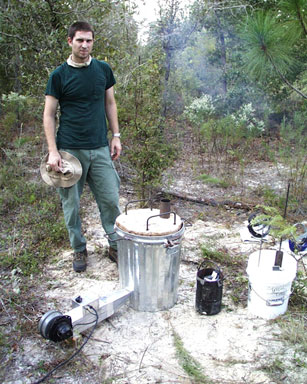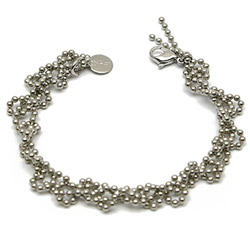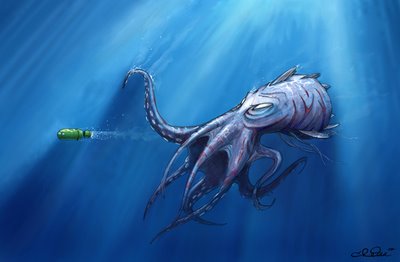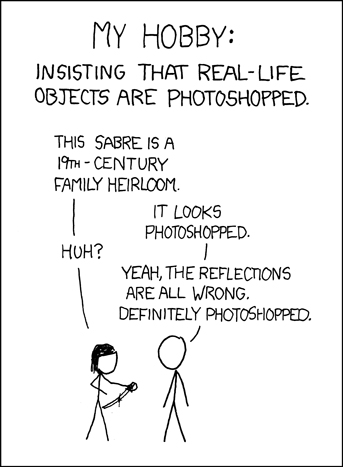
Last Sunday I saw a segment on the morning news about Dr. Walter Tschinkel, an entomologist at Florida State University who studies ant nest architecture. On the news, Dr. Tschinkel and his team melted pieces of aluminum in a large can, poured it down the opening of an ant nest. When the metal hardened, the team then excavated a large beautiful cast underground that represented the tunnels and chambers of the ant colony. After seeing this, I became fascinated by the process and immediately contacted Dr. Tschinkel to find out more about his work:
me: “How did you become interested in ants?”
Walter Tschinkel: “I first became interested in the chemical communication in [social] insects and began working with ants. This then led to [the study of] social biology of ants and eventually I started studying the architecture in nests (about 15 years ago). I began casting nests first using dental plaster, and 6 years ago started using metal.”
me: “How did you come up with the idea of making casts of ants’ nests?”
Walter Tschinkel: “I was trying to pioneer the study of nest architecture by describing the range of architecture between species and within species. I would find nests and make plaster casts. The disadvantage of plaster casts is that they break easily so after you dig them up, you have to glue the pieces back together again. But the advantage is that you can break them into pieces, soak them in water for about a month to break the pieces further, and study the ants. Occasionally we use metal [casting] for display, or we use them for nests with narrow channels. Zinc is what we use. The disadvantage is [in addition to] sacrificing all the ants, you can’t count them afterwards.”

Above: Stereo Images of casts of ant nests. Cross your eyes to see the form in 3D.
me: “Wow. So when you break apart your plaster casting, do you place different chambers in separate containers to compare the ants?”
Walter Tschinkel: “Sometimes we do, but mostly we look at all the ants at the same time. Usually we look at all the ants together when the chambers are close together, but if the species’ nests have a long vertical shaft with horizontal chambers on the bottom, we may separate the part and look at it on the side.
I have three or four papers on this topic. Did I send them to you? They’re posted on my website.”
me: “I don’t believe I got those links, but I’ll definitely look for them on your website later. *brief silence* Did you have any unexpected findings the first time you saw the cast?”
Walter Tschinkel: “Ohh yes. At the time I was studying fire ant colonies and had theories about their nest architecture, so I decided to take a plaster cast [to compare with my theory]. The plaster cast showed something completely unexpected, which shows just how complicated the nests can be and how difficult it is to study something three-dimensional that you can’t see. So after that I expanded on that idea and started making casts of other species.”
me: “How do the nests of different species compare with nests of the same species of ants? Is there anything else that’s interesting and you would like to share?”
Walter Tschinkel: “A typical ant nest is made up of one or more vertical shafts that link together the horizontal chambers. Details vary between species. [In general] different species have different nests architecture; related species have similar nest architecture. Also interesting is the strong [positive] relationship between the number of ants [in the nest] and size of that nest…actually, the nests are built by different ants, so the majority of the ants living in a nest are not the ones who built that nest, but the relationship holds anyway. *brief pause* The ants are born in bottom of the nest. During their life cycle they gradually move up and change jobs. Near the last part of their lives they go out onto the surface and these are the ants that we usually see looking for food.”
me: “That’s very interesting! How do you experimentally determine their age in relation to which part of the nest they occupy?”
Walter Tschinkel: “We do so by tracing the pigmentation of the ants—the ants are pale when first becoming the adult, so we can look at color of ants throughout different parts of the nest and find that there are more pale ants near the bottom. Or we look at mandible wear—the older the ant, the more wear there is on their mandible. With this method we judge their relative age based on relative wear.
*long pause as I go through my list of questions to make sure I didn’t miss anything*
me: “Ummm…ok….can you share the details about the process and materials of casting the nest?”
Walter Tschinkel: “I use orthodontal plaster because it’s cheap and you can buy it online in any dental supply store. For metal I chose zinc for its low melting point. I get the zinc free from old anodes at marine shipyards. Zinc corrodes and steel doesn’t, so they attach zinc bars to the hull of the ship, and replace them when they are about half corroded away. Sometimes I use aluminum from old aluminum scuba tanks. We place charcoal in an insulated garbage can, and put the aluminum in the bottom half of a steel scuba tank to melt metal [placed in a smaller container within the tank and then pour the molten metal down the nest opening].”

Above: Materials used for metal casting, including the kiln (big metal container in the center).

Above: Pouring metal into a nest opening.
At this point we concluded the bulk of the interview and began chatting a little about other things. I learned that Dr. Tschinkel used to do pen and ink illustrations for his own publications, and now does color pencil illustrations while traveling. Here is a color pencil drawing he shared with me:

For more information on Walter Tschinkel and his work, go to:
http://www.bio.fsu.edu/faculty-tschinkel.php
http://www.insectscience.org/4.21/
http://insectscience.org/5.9/ (there are a few stereo images on this site)
http://bio.fsu.edu/~tschink/publications/2003-3.pdf










